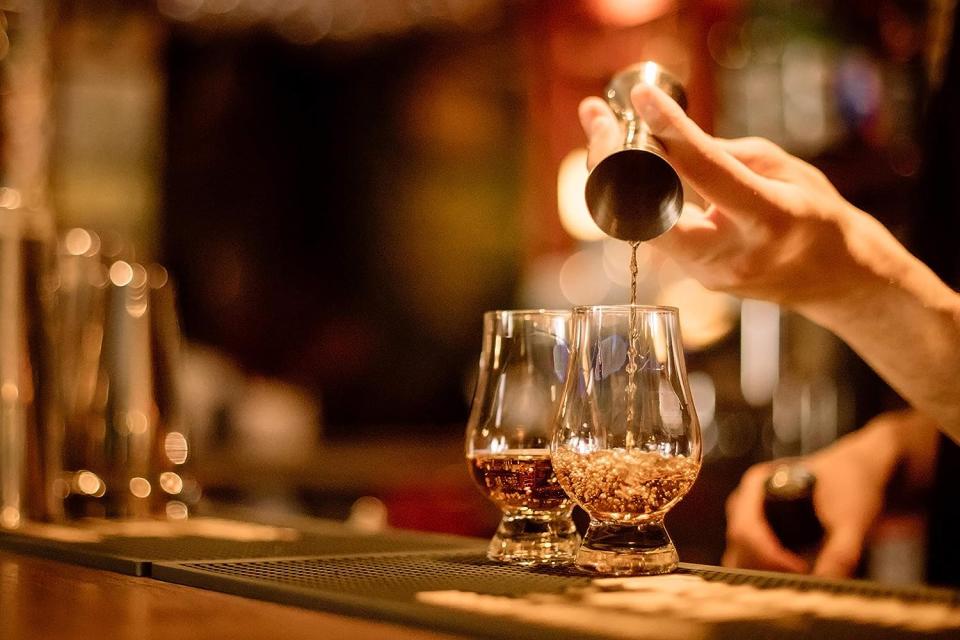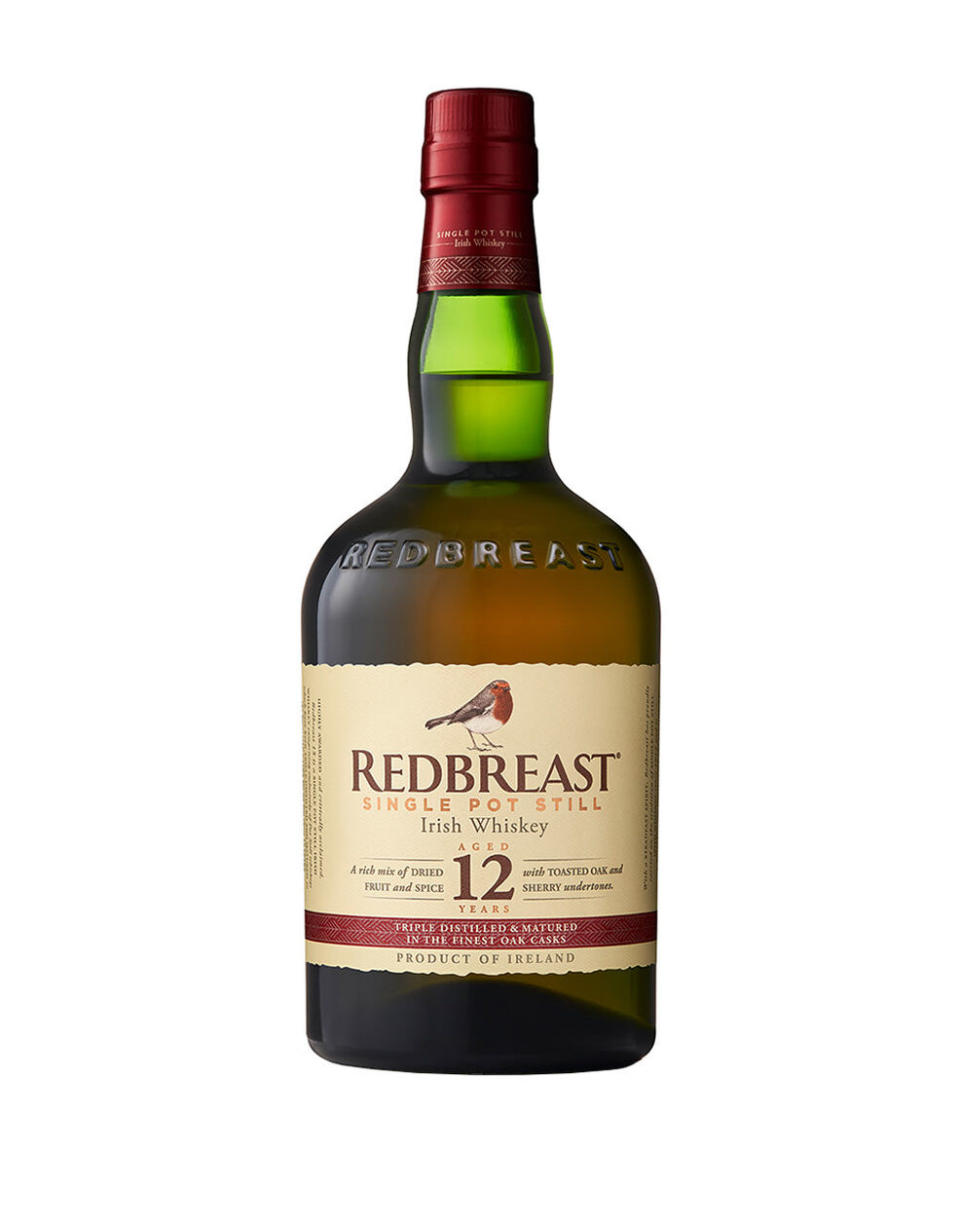How to Drink Whiskey, According to a Master Blender

If you purchase an independently reviewed product or service through a link on our website, Rolling Stone may receive an affiliate commission.
It’s OK to be intimidated by whiskey.
More from Rolling Stone
'The Big Lebowski' Celebrates 25 Years of Bowling-Ball-Licking Humor- Here's How to Watch the Film
MasterClass Holiday Gift Offer: Buy One Annual Membership and Get One Free
It’s strong, there are endless expressions, and sometimes whiskey snobs can be, well, snobs. But, like any activity, learning to enjoy whiskey only requires a great guide, and we’re here to provide one: Billy Leighton, master blender emeritus at Irish Distillers. Leighton has been with the brand for the last 47 years, playing a crucial role in the production of iconic Irish whiskeys like Jameson and Redbreast.
“Some people are daunted if they’re not experienced Whiskey drinkers,” says Leighton. But, he says, it all comes down to what you’re trying and how you’re trying it. “Trying a premium whiskey like Redbreast, It’s not just a matter of, you know, getting the bottle and pouring the glass and drinking it. There’s a nice ritual.”
We had Leighton walk us through his version of the whiskey-tasting ritual, and we think it can turn anyone into a whiskey lover. Check out his guide further down this page, and see below for the necessary goods.
What You’ll Need for Whiskey Tasting
You’ll want to get two things before tasting whiskey (if you don’t already have them): high-quality glasses, and, of course, a nice beginner-friendly whiskey. Here’s where to find both of those.
Whiskey Tasting Glasses
The first thing any aspiring whiskey drinker will want is a great set of glasses. “It might be a tumbler or it might be like the Glencairn blenders glass, which is really good for a Redbreast 12-year-old or anything similar.” Luckily, you don’t need to scour the web to find solid glassware. Big-name retailers like Amazon and Nordstrom carry high-quality glassware at different price points. Also, a small wine or port glass will also work fine in a pinch, but a Glencairn is preferred.
$36.99
A Beginner-Friendly Whiskey
Most inexpensive whiskey will taste too harsh to an inexperienced palate. Sadly, that’s also the stuff that beginners often taste first. Instead, we suggest spending a bit more on a bottle that’s actually meant to be enjoyed neat (as opposed to in a cocktail or as a shot). Leighton’s Redbreast 12 is a great option, offering accessible complexity and a smooth sweetness that should be easy for just about anyone to sip (Leighton’s most recent Redbreast creation, the Tawny Port Cask Edition, is great too if you can find it). Some other options we’d suggest are Wild Turkey 101, Chivas Regal XV, Michter’s US1, and Glenmorangie Nectar.
$75
How to Drink Whiskey: A Step-by-Step Beginner Guide
You have your whiskey and your glasses; now it’s time to dive in. Below is a step-by-step guide to enjoying a nice bottle of whiskey, all with tips from Billy Leighton.
1. Read the Bottle
Leighton’s first step to a great whiskey-tasting experience seems obvious, but many drinkers (even pros) forget it: “Look at the bottle, first of all, because there is an awful lot of information on the label,” he says. Note what kind of whiskey it is, what strength it is, and — if available — what kind of tasting notes to expect. “You should get yourself into the frame of mind of what it is you’re actually going to taste,” says Leighton. “I think that’s important and it’s part of the enjoyment process that people maybe forget about or just skip past.”
2. Listen to the Whiskey
As expected from someone with 47 years in the business, Leighton is a whiskey romantic. And his next step in the tasting process — listening to the bottle’s sounds — is probably his most romantic suggestion, but we recommend heeding it. “Enjoy pulling the cork out of the bottle,” he says. “Again, it’s a simple thing and people just say, ‘Oh, well if we want to pour the whiskey, obviously we have to take the cork out,’ but there’s a certain pleasure to be had in listening to the cork, and the noise of the pop that you get whenever it comes out of the bottle.”
But the auditory experience doesn’t stop there: “And even the pour itself, you know, if it’s a full bottle, if it’s a new bottle, you’re gonna get that noise that goes with the pour from a bottle of whiskey. It’s a very satisfying noise.” Crucial to remember here is that, “There’s a lot of pleasure to be had before even actually tasting a whiskey,” he says.
3. Look at the Whiskey
“Before even nosing your whiskey, hold it up to the light,” says Leighton. “Get light behind the glass, and give it a swirl to see what the liquid is actually doing in the glass.” What you’re looking for here is color and more importantly “legs,” which refers to the way the whiskey runs down the sides of the glass after you swirl. This indicates the viscosity of the whiskey: If it’s thick and moves slowly down the glass, you can expect a creamy, full mouthfeel. If it’s thin and moves quickly, you’re looking at a more light, floral experience.
4. Nose the Whiskey
Next comes the (first half of) the main course: nosing the whiskey. “I’ve seen some people take a glass and stick their nose right in it. For me, that’s not how to do it,” says Leighton. Instead, he suggests slowly raising the glass to your nose and noting how the aromas change as it approaches. “You’re going to get the effect of the spirit first, and then the character starts to build up. With the Redbreast 12-year-old, for example, you’re going to get some of those dried fruit characters. And as you then get into the whiskey, that fruitiness becomes a bit more intense,” he says.
Another pro tip: Try tilting the glass horizontally and nosing the lower part of the rim. This way, you’ll get more sweetness and less alcohol, as the alcohol fumes will rise and slip out of the top of the glass.
While you’re enjoying the “evolving sensory experience” of nosing, as Leighton puts it, return to the aroma notes on the bottle. “There’s enjoyment to be had by dissecting the aromas that you’re getting and trying to fit them into the clues that you’ve already been given in the tasting notes.”
5. Taste the Whiskey
Now it’s time to taste the whiskey. Like almost all experts, Leighton suggests tasting all whiskey neat at first (no water, no ice), and then deciding if and how much water you might want to add to reduce the alcohol burn. And there’s no shame in adding water: Most pros add at least a couple drops of water to their glasses.
A thorough whiskey tasting consists of at least two sips, minimum, with the first prepping your palate and the second actually conveying the flavors. “Before we even try and decide where the flavors are coming from,” says Leighton, “just feel the texture of it in your mouth. What’s it doing to your mouth? Are you only feeling it on the point of your tongue? or the sides of your tongue? Or, like with Redbreast, is it a full mouth coating effect?” After feeling the whiskey in your mouth, try sucking some air past the sip (like you would when tasting wine) to create what’s called the “retro aroma.” Then, after you’ve taken another sip or two, try to allocate some flavors like you did with the aromas.
Throughout this process, however, Leighton says to remember that, “Anyone can enjoy a whiskey, but they don’t have to describe what it is they’re enjoying about their whiskey.” In other words, don’t get nervous about identifying flavors like a pro — just enjoy the liquid. If you can pick out and label some flavors, great. If not, don’t sweat it.
6. Enjoy the Finish
The final part of the whiskey-tasting process is to maintain focus on your palate. “Once you have swallowed the whiskey, you’re still going to have that taste experience going on in your mouth,” notes Leighton. “What’s happening in the finish? Do you still have that mouth-coating effect? Is there a sweetness that kind of lingers there? Does the whiskey dry out? I feel with Redbreast there is a sweetness that lingers and actually elongates the enjoyment of the finish.”
Then pour yourself another glass. And maybe another.
Best of Rolling Stone


